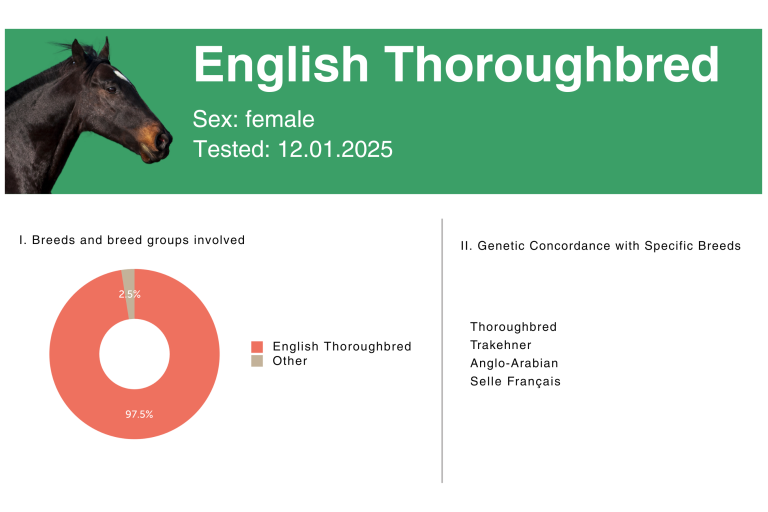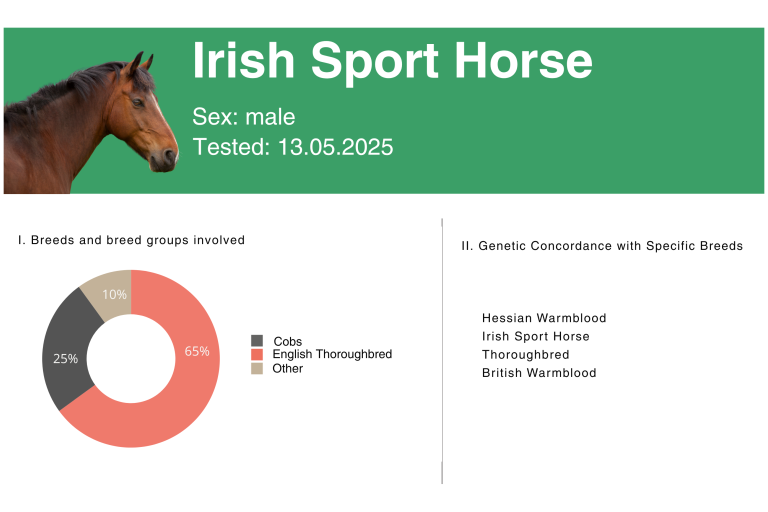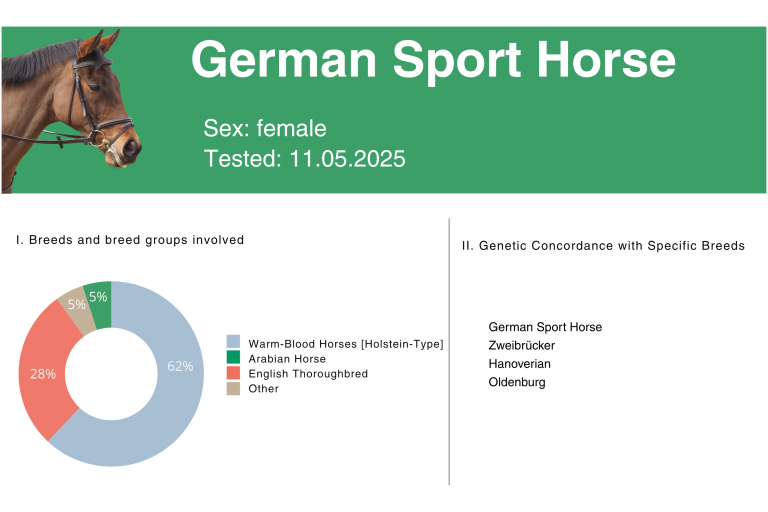Determining the Thoroughbred Percentage
The genetic Thoroughbred percentage of a horse can be determined from the red segments in the pie chart shown in Part I of the Breed Analysis, titled "Involved Breeds and Breed Groups." Below are specific examples with varying Thoroughbred percentages, from which this value can be read.
Note: If the analysis determines a Thoroughbred percentage of less than 5%, it will not be listed.
In Part I of the analysis (genetic composition), the extent to which the examined horse possesses genome portions of the Thoroughbred breed is shown. This horse has a Thoroughbred percentage of 97.5%, corresponding to a horse of the ‘English Thoroughbred’ breed. The genome share categorized as “Other” is typically found in all members of the breed and originates from the foundational bloodlines of the Thoroughbred. The breed developed in the 17th century in England through targeted breeding of native mares with oriental stallions. The breeding focus quickly shifted to speed, with only the most capable horses used for further breeding. The first official studbook was established in 1793. The detectable “Other” genome share is not due to later crossbreeding, but reflects the original genetic foundation of the breed.
Part II of the similarity analysis illustrates that Thoroughbreds have played a defining role in the breeding history of many modern horse breeds. The breeds listed here contain similar Thoroughbred percentages as the examined animal, indicating shared genetic origins or breeding influences.
In Part I of the analysis (genomic composition), the English Thoroughbred share is 65%, and the Cob breed group accounts for 25%. This matches the breeding history of the Irish Sport Horse:
These horses are produced by crossing Irish Draughts (Cob type) with English Thoroughbreds or other riding horses to “breed a sport horse with excellent jumping ability.”
In Part II of the similarity analysis, the Irish Sport Horse does not appear at the top of the list. This is partly due to the significant influence of other European warmblood breeds in recent generations. As a result, today’s studbook includes many horses descended from these crosses, which has significantly increased the genetic diversity within the population.
In Part I of the analysis , the tested horse shows a predominant share of Holstein-type warmblood (62%) and Thoroughbred (28%). This combination is typical for the German Sport Horse, which was developed by combining various regional warmblood breeds such as Holsteiner, Hanoverian, or Mecklenburger. To enhance performance, stamina, and elegance, Thoroughbred blood has been regularly introduced—primarily through stallion lines.
Part II of the analysis confirms the closest match with the German Sport Horse, which aligns with the breed information provided by the owner. The horse also shows strong genetic similarities with the Zweibrücker, Hanoverian and Oldenburg —all German warmblood breeds with similar breeding goals and uses. These breeds share a common genetic foundation and are often crossbred with one another to promote specific athletic traits.



